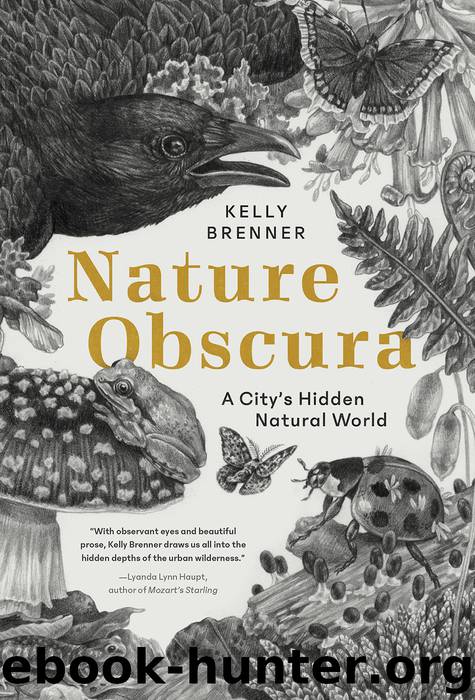Nature Obscura by Kelly Brenner

Author:Kelly Brenner
Language: eng
Format: epub
ISBN: 9781680512083
Publisher: Mountaineers Books
Published: 2020-04-14T16:00:00+00:00
To Be or Not to Be Armored
This story begins with a dramatic change in the land, not due to humans, but wrought by glaciers. Just a short 17,000 years ago, a massive sheet of ice, 3,000 feet thick, covered the whole of northwestern North America. The thick and heavy ice spread from Alaska down through northern Washington and east to Montana, an area the size of Greenland. The Cordilleran Ice Sheet was just the latest in a series that expanded and retreated several times over the past two and a half million years. The last ice age saw the Cordilleran Ice Sheet produce lobes, one of the largest being the Puget Lobe, pushing down into Washington. As the ice retreated starting about 14,000 years ago, it sculpted and molded Puget Sound and the Salish Sea into what they are today. Some areas were scoured deep, creating the sound and lakes, while some land, without the weight of the ice, rebounded and rose up again, creating new topography. As mastodons and woolly mammoths began to move north behind the retreating ice sheet, another, much smaller animal also began moving into the region, but from the sea.
While the Pacific Northwest was covered in ice, the tiny threespine sticklebacks (Gasterosteus aculeatus) were already living in the Pacific Ocean, and as they moved into the newly formed Salish Sea, they discovered a new freshwater system sculpted by the retreating ice. Newly formed rivers and lakes were quickly inhabited by sticklebacks, and as the ice melted and the land continued to shift, some of these fish became trapped in bodies of water with no outlet. There were likely anadromous sticklebacks before the ice age—those that lived in saltwater and moved into freshwater to breed, just like salmon—but with the abundant new freshwater habitats, more marine sticklebacks evolved to become anadromous. And others, although they had access to the ocean, willingly stayed in freshwater bodies, establishing resident populations.
My first encounter with sticklebacks was thanks to the crows at Seward Park. As I walked along the trail on the far north end of the peninsula early one spring, I noticed an unusual number of crows that were very interested in the shoreline. I’ve learned to pay attention when crows gather because it often leads me to bald eagles, barred owls, and other interesting wildlife. This time, I walked down to the lake’s edge and saw dead fish on the shoreline—many of them. On the tops of two large boulders, the remains of several small fish had been left by the crows, as though at a dining table. The fish were threespine sticklebacks. Some had brilliant red throats, and others were dull gray. After mating, many of these fish wash up dead on shorelines. Their lives aren’t long—two to four years is about all they get; but once they die, they provide meals for other animals, including crows. That spring I watched many crows pluck floating sticklebacks off the surface of the water.
Many of the washed-up sticklebacks I
Download
This site does not store any files on its server. We only index and link to content provided by other sites. Please contact the content providers to delete copyright contents if any and email us, we'll remove relevant links or contents immediately.
The Lonely City by Olivia Laing(4750)
Animal Frequency by Melissa Alvarez(4395)
All Creatures Great and Small by James Herriot(4232)
Walking by Henry David Thoreau(3894)
Exit West by Mohsin Hamid(3777)
Origin Story: A Big History of Everything by David Christian(3648)
COSMOS by Carl Sagan(3554)
How to Read Water: Clues and Patterns from Puddles to the Sea (Natural Navigation) by Tristan Gooley(3407)
Hedgerow by John Wright(3275)
The Inner Life of Animals by Peter Wohlleben(3259)
How to Read Nature by Tristan Gooley(3249)
How to Do Nothing by Jenny Odell(3232)
Project Animal Farm: An Accidental Journey into the Secret World of Farming and the Truth About Our Food by Sonia Faruqi(3177)
Origin Story by David Christian(3147)
Water by Ian Miller(3128)
A Forest Journey by John Perlin(3027)
The Plant Messiah by Carlos Magdalena(2883)
A Wilder Time by William E. Glassley(2818)
Forests: A Very Short Introduction by Jaboury Ghazoul(2790)
